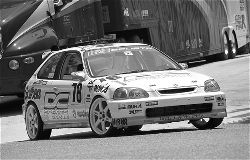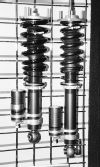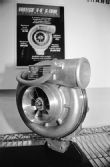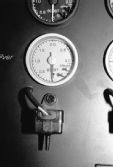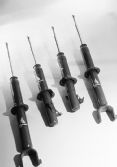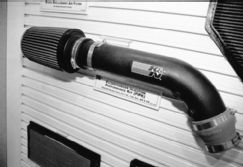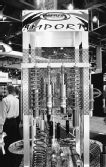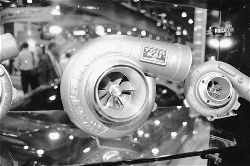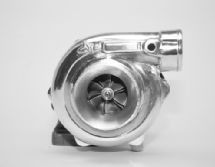Q I really like your guys’ magazine and the Honda tech. I just had my engine rebuilt with ARP fasteners all through the bottom end, forged Arias pistons, prepped factory rods, stainless steel valves, and a ported head. When it’s finally running, I think this is going to be one mean B16. I had the engine professionally rebuilt locally, and my friends who helped me remove it from my Civic Si are gonna help me put it back in the car. I am wondering what oil I should use when I start the motor. Something heavy like 20W50? How long until I can really drive on it hard? The engine was built to spin up to 9K. How long until I can apply a plate nitrous system?
Andrew Jin Via the Internet
A Starting a newly rebuilt motor the first time is not as simple as putting the key in and cruising for doughnuts. Come on now, how simple was your first time? Actually, that’s probably a bad analogy. The tolerances are much tighter on a new motor with fresh bearings, pistons and rings. Heat will build quickly, and proper lubrication and cooling are of the utmost importance. Upon assembly most of the motor’s friction surfaces were coated in a heavy assembly lube/paste. The viscosity of such lubrication is designed to cling to these moving components. This is especially helpful in the few vital moments in which the engine rotates without oil pressure for the first time. It might not be a bad idea to prime the Honda oil pump to achieve some oil pressure and coat the moving surfaces before the engine is fired. Accu-sump is a popular product to help prime engine pressure with oil from a stored reservoir that can also be used to drastically reduce engine component wear upon start-up. The first time the engine is fired it should be run at about 2,500 rpm for 25 minutes or so after you’ve verified oil pressure. During this time the water temperature should be closely monitored as well. The water temp will initially run hotter, like around 190–195 degrees, as the tighter tolerances will require break-in to loosen and reduce friction and heat.
After this run-in period, the oil and filter should be changed, while the engine is still warm. The inside of new engines can be littered with lint and other tiny debris from assembly that gets taken up by the oil. This debris can clog a filter and flow directly to the engine’s bearings, causing premature wear (even scoring) and failure. As the engine is run longer, the rings will seat better and improve each cylinder’s sealing capabilities. In order to run an engine with forged pistons hard, it should be run gingerly for at least 500 miles before it gets revved fearlessly. You should let it break in at least 1,000 miles before you apply the nitrous setup.
Q I drive a ’97 Mitsubishi Eclipse GS-T. It’s a quick car, and I’ve been adding other parts to make it faster. I’ve put on simple things like plug wires, an intake, and a boost controller, and I want to do more but don’t have much money. Intercooler upgrades seem pretty straightforward. The intercooler is much cheaper than the ball-bearing turbo upgrades that I’ve seen some companies offer. I’m not quite sure what the difference is or how much more power I can make with just the turbo upgrade. Should I just get the new turbo, or is the intercooler enough? I bet both would be better, but that’s too expensive. I also need to be able to drive this car to work without hurting the reliability.
Oliver Muntz Tucson, AZ
A Ball-bearing turbochargers use race car-derived technology to help reduce friction. The ball-bearing turbo’s center section houses a low-friction ball-bearing or needle-bearing setup to support the impeller shaft instead of the metal bushings typically used on OE compressors. Ball bearings reduce compressor and turbine wheel inertia. Lower inertia means that the turbine wheel is easier for the exhaust pulses to spin, and the boost will come on sooner with reduced lag. Most OE turbo units use the less sophisticated bushing design that relies on engine oil pressure to maintain a thin, lubricating film of oil on the spinning turbine shaft and bushing surface. This does not mean that the OE units are inadequate, just that they are more cost-effective to produce. The ball-bearing unit is capable of producing more boost sooner than the standard turbo (this will place additional demands on the fuel and ignition system, and ultimately the engine’s rotating parts). To best exploit the boost and power potential of some of the larger capacity ball-bearing turbochargers, it’s best to build the bottom end of the motor and use a cylinder head sealing medium (steel or copper head gasket) that can cope with upwards of 2-bar of boost pressure. An intercooler upgrade will be easier to install and help maximize the boost potential of your stock turbocharger. The larger intercooler will help lower the temperature of the intake charge, add density to the air charge, and allow you to crank the boost controller up a little higher without treading into the realm of detonation and hurting the engine’s reliability. In addition to the intercooler upgrades, which will permit additional boost, you might want to consider fuel system upgrades such as a larger capacity pump, regulator, or fuel injectors to help met the fuel demands of the increased airflow this engine will be dealing with.
Q My parents were looking to buy me a new car to go off to college. Of course, I wanted a 2000 Honda Civic Si. Instead I got a ’01 Mazda Protegé with a 2.0L motor. I guess it’s better than riding the bus, but it kind of felt like getting socks on Christmas. I smiled, pretended I was grateful, and then left the room to go pour through my magazines to see if anyone made parts for Protegés. Am I stuck or is there anything I can get to make this thing quicker or look less like something my teachers would drive?
Justin Lim Via the Internet
A Your parents did you a solid by purchasing you that car, you spoiled little ingrate. The Protegé is not a bad car. Say that to yourself 10 times, and maybe you’ll start believing it. While Erebuni offers a body kit, there is also a tasteful OE selection offered by Mazdaspeed for its MP3 variant of the Protegé. The Mazdaspeed equipment for the Protegé includes a wheel/tire and suspension package that greatly enhances the driving characteristics of what was already a strong-handling compact sedan. There isn’t going to be a whole lot available in the way of insane power-producing parts, so you can forget about turbo and supercharger bolt-on kits. So expect to find the typically effective intake, exhaust, and suspension components available from Racing Beat and Corksport, among others (www.racingbeat.com, www.corksport.com). As the MP3 proved, you might not be able to turn this into a world-beating mini sedan, but it certainly can be made into a car that is more fun than being a rockstar trapped on a bus filled with horny pornstars. OK, maybe not, but it should be at least as fun as a comparable Honda with the right selection of parts.
Q I drive a ’96 Civic hatchback, and I just had an engine swap from an Integra GS-R. I’m pretty unhappy that after all that waiting and work and money, the engine burns oil and just doesn’t seem to make big power. My friend has the same combination in his Civic, and it runs a whole lot harder. I know that the engine suppliers sell used engines without any real guarantee. But all you hear about is how reliable Honda’s engines are, and now it seems like I got stuck with the only lemon motor they ever made. Am I screwed? Is there anyway to verify this engine’s condition to see if it needs to be replaced?
Anton Citroen Via the Internet
A Most of the major engine suppliers turn over such a large volume of used, low-mileage engines that there are bound to be a few sub-par motors that fall through the cracks. With used motors, its quality is also dependent upon the original owner’s dedicated or negligent maintenance. However, even under fairly severe abuse, the B18C has proven to be a very strong and durable motor. If your particular motor is consuming oil and seems down on power, you should first evaluate each cylinder’s condition. The culprit in this case could be in the valvetrain, either valve guides or seals that permit oil to seep into the combustion chamber. A weak cylinder reduces combustion pressure, compromising engine compression and power. However, the more serious (and expensive) culprit could be piston ring damage, which would necessitate the engine’s removal for reconstruction. The rings maintain the piston’s seal against the cylinder wall surface, and their structural integrity is a key part of creating the vacuum necessary to draw air in to make power. The ring pack also controls oil up-flow from the pan, as it is splashed about by the spinning components. If this oil control ring is badly worn or has been damaged by overheating, oil will also be able to find its way into the combustion chamber. There are a few ways to verify the condition of a cylinder’s pressure. The easiest method of ball-parking engine condition would be the “plug read.” Examining the plugs will only indicate if there is indeed oil in the combustion chamber, which you already seem to know, and which cylinders are the weak sealing ones.
The plugs will also indicate the richness or leanness of the fuel mixture. The compression test is another means of evaluating a cylinder’s strength and must be done with the engine at operating temperature. This test apparatus, usually a hose with a gauge at the end of it, threads into the spark plug hole. Then the throttle plate must be held wide open and the ignition disabled. On your fuel-injected car, disconnect the fuel injector so they won’t squirt fuel. With the gauge properly installed, crank the engine over at least four times and record the highest reading. Test each cylinder in the same manner. The lowest reading should be at least 75 percent of the highest recorded number for street use. For a performance motor, you’re looking for 90 percent of the highest reading on the weakest cylinder. For a Honda, a reading of around 190 psi should be healthy. If all cylinders but one show strong readings, squirt some 30w oil into the weak cylinder. If the oil helps the compression a bit, then the rings are not sealing. If the number continues low, then the problem resides in the valves (which may be burned), worn seats, the guides, or even a damaged head gasket, but the problem is definitely in the top half of the engine. The best method for determining an engine’s condition is the leakdown test, which is basically a more sophisticated compression test that helps you pinpoint the source of the pressure leakage. The difference is that the pressure applied in the leakdown test is externally applied. It reads in percent of leakage at a given pressure to indicate the cylinder’s sealing ability. The test is performed at exactly TDC (Top Dead Center) on the piston’s compression stroke with both valves closed. Pressurized air is supplied to the cylinder with a special fitting that adapts to the spark plug hole. The cylinder should do a good job of holding the pressure. A blown head gasket will appear as air escaping through the adjacent cylinder’s open spark plug hole, or as air bubbling in the cooling system. A pressurized leakdown test will reveal a burnt or damaged valve seat, if you hear air escaping through the intake manifold or exhaust tract. At TDC the cylinder’s rocker arms should be loose but not too loose. If there is excessive play, the valve is most likely not seating properly, and this alleviates the cylinder pressure. So here are the procedures you can use to verify the condition of your used engine. Hopefully, it may just need a new or rebuilt cylinder head, if you’re lucky.
Q Several months ago I added a Jackson Blower to my ’95 Integra GS-R. I really like the additional power, and the torque has really helped out with the pick-up. Now the problem seems to be front wheelhop like you’d find on the back of a V-8 muscle car when I mash the accelerator in First gear. This additional power is not too much use without the traction. I don’t know if I should go to a stiffer front spring, or different one. I also don’t want to mess up the handling. Should I remove the aftermarket sway bar? Any ideas?
Stan Hessons Richmond, VA
A Before looking into altering the spring rates and sway bar combinations that may adversely affect your vehicle’s handling, be sure to inspect all the front suspension bushings. Excess bushing play could be the cause of the movement that is responsible for the wheelhop. If these bushings are worn, replace them with more resilient polyurethane versions, which are stiffer and better suited to controlling wayward control arms. If the hop persists, then you should look into swapping shock absorbers to a tunable version that adds more rebound dampening to help control the wheelhop. Rebound-adjustable shocks for this application are available from Koni and Tokico. Additional shock absorber compression and higher spring rates will only aggravate the problem and give a rigid and back bruising ride.
Q I drive a ’96 Honda Civic that I’m trying to get ready for the local autocross events. So I really wasn’t too worried about making power. Instead, I focused on suspension improvements and the handling. I got a full coilover kit from Ground Control and the recommended Koni shocks. The setup wasn’t too complicated to install, but I noticed when I had the car on the jackstands, the wheels and suspension sank and created a large gap between the springs and the perch. When you let the car down off the jack, it makes a scary sound as the springs seem to “re-orient” themselves. Is it supposed to be like this? When I twist up the lower coilover perch to eliminate this gap, the ride height goes back to almost as high as normal. If I drive with the car lower and over a pothole by accident, is it possible for the spring to get below the perch and line up badly or get damaged as the wheel comes back up? Are my coilovers defective or assembled wrong?
Nestor Canto Via the Internet
A Actually, the condition you’ve described is pretty normal for race-style coilovers. In the real racing world, there is little chance that your car will be airborne long enough to bring the coilsprings from their upper perch, unless of course, you’re filming some sort of remake of Smokey and the Bandit and jumping a gorge. The springs should reseat themselves in the upper perch easily and without fail. We’ve never heard of someone, other than in rally competition, unseating a coil spring and damaging a suspension. Some coilovers incorporate designs that help reseat the spring into the upper perch to compensate for this distance, but once again, this has never really been a problem, especially on a lowered car that is going to compete in parking lot events. When you’re ready to jump your rocket assisted Honda over Snake River, try a full-tilt, long travel, rally-style suspension from Ohlins or Penske, which should only set you back about eight grand.

